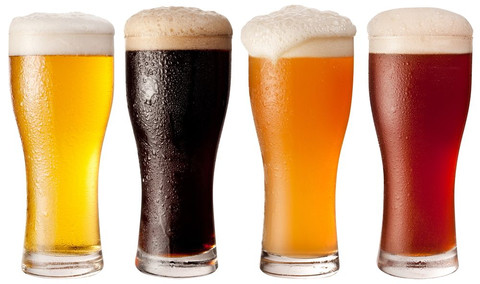8 Things a Beer Snob Might Say (And What Those Things Mean)
 Here at Box Brew Kits, we’re big fans of Thrillist. I mean, who doesn’t enjoy a continuous flow of wacky lists like "10 "white trash" foods you need to give a second chance" or "16 surefire ways to infuriate a hotel staff?" A few weeks back, one article that stuck out to us listed 22 things a beer snob might say. Considering our lust for beer and distaste for snobs, we thought we’d give that article a deeper look.
Here at Box Brew Kits, we’re big fans of Thrillist. I mean, who doesn’t enjoy a continuous flow of wacky lists like "10 "white trash" foods you need to give a second chance" or "16 surefire ways to infuriate a hotel staff?" A few weeks back, one article that stuck out to us listed 22 things a beer snob might say. Considering our lust for beer and distaste for snobs, we thought we’d give that article a deeper look.
While the Thrillist article discussed how to talk like a beer snob--e.g. “I prefer cask-conditioned beers”--it didn’t actually get into what those things meant. In this post, we’re going to run through 8 of the snobbiest entries on that list, and provide you with some background on each of them so don't just know the beer snob talk, you’re able to walk it, too.
*Disclaimer: We don't actually condone beer snobbishness
1. “I’m really into big beers.”
What is a big beer? This generally refers to beers with an ABV or OG above a certain level. We’re talking high gravity. For reference, let’s say most beers hover around 5% ABV. While the big beer cutoff’s arbitrary, we’ve heard numbers like an ABV greater than 8% or an OG greater than 1.090. Beers in this category might include scotch ales or imperial stouts.
2. "This is a very sessionable ale."
What is a session beer? It refers to a beer with relatively low alcohol--typically 5% ABV or less--that you would characteristically drink for an extended period of time. This is the type of beer you’d sip on if you’re in the mood for some day drinking and lawn games, but aren’t exactly interested in falling into a drunken stupor before dinner starts cooking on the grill.
3. “My favorite beers start at 80 IBUs.”
What are IBUs and what is the significance of 80? When we think of IBUs, we think of hopheads. IBU is an acronym for International Bitterness Units. And, you guessed it, it's a measurement of the bitterness of beers, which comes from the hops used during the brewing process. When you get to 80 IBUs, you’re well into IPA and barleywine territory, as opposed to something on the other end of the spectrum like a lambic.
4. “That tastes way better on Nitro.”
What is a nitro beer? Lots of craft breweries are jumping on the nitro train. Nitro simply refers to the use of nitrogen in the carbonation process, rather than primarily carbon dioxide. This results in beers that not only look creamier, but also taste and feel that way. You may have heard of Left Hand’s Nitro Milk Stout--in this case we agree that it tastes way better on nitro!
5. “This is one of the highest-ranked beers in the world.”
Who ranks beers? There are several notable beer ranking publications--and of course, a lot of independent bloggers--but the sake of simplicity let’s talk about Beer Advocate and RateBeer. These sites aggregate user beer ratings, providing readers with a comprehensive and crowdsourced idea of a beer’s aroma, taste, and overall score. Currently, the highest ranked beer on Beer Advocate is The Alchemist’s Heady Topper (anyone going to Vermont soon?).
6. “This beer is infinitely quaffable.”
What does quaffable mean? Please refrain from using this word in casual conversation, but if you must, know that it refers to a beer’s drinkability. This is separate from a beer being “sessionable,” which is focused on ABV. Rather, quaffable speaks to whether or not you can easily drink more than one of the same beer in one sitting. A good comparison may be an IPA (generally easy to drink in quantity) versus a porter.
7. “I actually prefer this beer warm.”
Why would you drink a warm beer? Ever wonder why craft beers don’t have a set of mountains that turn blue when they get to a certain cold temperature? That’s because good beers aren’t meant to be drank at extremely cold temperatures that numb the taste buds...because they’re good beers. Some beers actually benefit from sitting out for a bit, warming up slightly above the normal 40 °F fridge temperature. Others, like cask ales, are served even closer to room temperature.
8. “This has a surprisingly pleasant mouthfeel.”
What does mouthfeel mean? Forget about the taste of the beer--how does it feel inside of your mouth. It’s not rocket science, but that’s mouthfeel. What influences mouthfeel are things like carbonation and creaminess.

